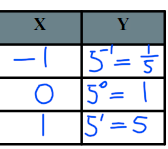Circular Permutations
- are arrangements of elements in a circular pattern.
Formula:
Example 1:
- In how many ways can 5 people be seated around a circular table?
n=5
Formula: (n-1)!
(5-1)!
4!
4.3.2.1
= 24
- In how many ways can 8 girls be seated in a dinner table?
n=8
Formula: (n-1)!
(8-1)!
7!
= 5,040
* There are two cases of circular permutation;*
(a) If clockwise and anti clock-wise orders are different, then total number of circular-permutations is given by (n-1)!
(b) If clock-wise and anti-clock-wise orders are taken as not different, then total number of circular-permutations is given by (n-1)!/2!
Example 2:
How many necklace of 12 beads each can be made from 18 beads of different colours?
clock-wise and anti-clockwise arrangement s are same.
total number of circular–permutations:
18P12/2x12
=18!/(6 x 24)
= 4.45x10 to the power of 13
* Some permutation problem have restrictions that affect the
answer and the process of solving it
- In how many ways can 8 people be seated around a circular table if Edgar and EJ refuse to sit next to one another?
STEP 1: Calculate total arrangements that is given in the problem.
n=8
Formula: (n-1)!
(8-1)!
7!
=5040
STEP 2: Calculate the number without following the restrictions, for this calculate the number when Edgar and Ej sit together.
*Edgar and Ej is going to be a one group because they sit together, so it makes (2!)
*added to the people left. (6!)
= 7!
(n-1)
(7-1)! =6!・2! = 1440
STEP 3: Calculate the number following the restrictions, for this calculate the number when Edgar and Ej is not sitting together.
* Subtract the total number of arrangement and the total number when Edgar and Ej is sitting together .*
5040-1440 = 3600
Permutations with Case Restrictions
Example 1:
*In how many 5 letter “words” are possible using the letters in BUFFALO?
*used the dash method
*count how many letters are their in the word BUFFALO. so theres 7 words.
*find letters that are repeated and divide the total number of with the number of letters that are repeated. and theres 2 repeated letters.
(7・6・5・4・3) ÷ 2 = 1,260
- Theres a set of basket of fruits being arranged in a cabinet. The first set has 3 oranges, the second has 4 bananas and the third set has 5 apples. In how many ways can the basket of fruits can be arranged if they should be kept in a same cabinet together?
○ - oranges
▲- apple
~ - bananas
~~~~ 4!
▲▲▲▲▲ 5!
○○○ 3!
*multiply all the number of quantity of the given number of fruits and the number of item that are given.
4! ・ 5! ・3! ・3! = 103,680







 .
.




 and then move all the points to the right by 3, resulting in the end of your question. I hope you all got it.
and then move all the points to the right by 3, resulting in the end of your question. I hope you all got it.